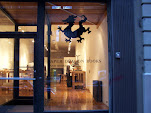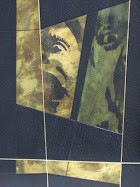
...no, they don`t really, but it is addictive and very easy to do as explained in the posting "design on the fly".It is easy, a lot of fun, and a quick way to transform a uniform coloured onlay.You will find denise and I carrying out the demo via the link below.
Future demos will be found listed in the categories marked 'Demos",one of three so far, with many more on the way.
There are demos on woodblock printing, and basic onlay to follow.
http://www.youtube.com/watch?v=cCA5fhjUMfA&feature=channel_page









2 comments:
Hello Gavin,
I have a question about the craquelure method which looks so very good. What material did you use for the resist, it looked very like regular starch paste. Am I right ? And stepping further out into the abyss, am I also right in assuming that the paste has to be left until it goes really quite ‘crispy’ .
I did have a go at the technique, using some natural kip side and fiebings spirit dye. The paste I used was rice starch paste. It all rather glooped together. Unfortunately, I did not get any batik effect, nice coluour in the leather though, semi pastel, so all is not lost.
But any advice would be gratefully taken and acted upon, I do like your blog site, and as ever I remain floored by the evident skill and creativity of today’s book artists, including, of course, you, I really appreciate your insights into why you make particular stylistic and design choices.
Many thanks
Ally
Ally Allen
hi ally
well thanks for the interest..
The paste used is wheat starch pre-cooked(mixed with cold water).I dump a whole load in thich coats.
It has to be left to dry, for an hour or two,using the dry heat of a drier speeds this up and makes the skin, as you say , crispy.
Then it can "cracked"in different directions, and dyed .
I used hewitts dyes, not that i`m sure it makes a difference.
Hope this helps.
g
Post a Comment